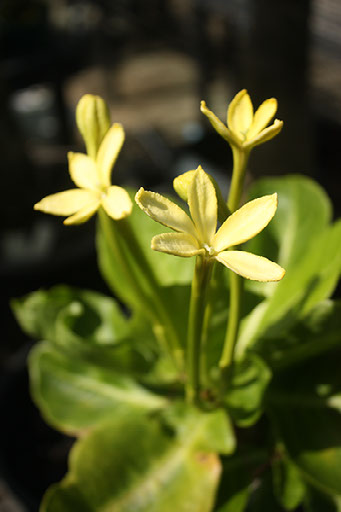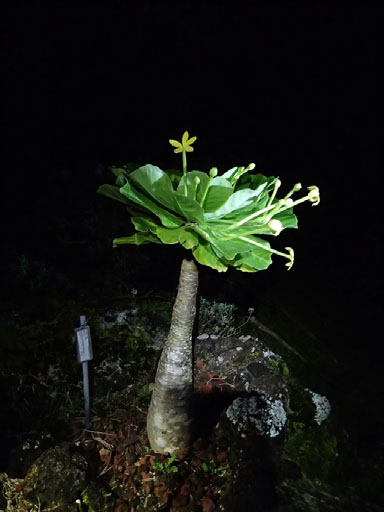Who’s Your Pollinator?
Rappelling down cliffs on Kauai, sometimes suspended a thousand feet above the Pacific Ocean, botanists hand pollinated the critically endangered Hawaiian flowering plant, Brighamia insignis (Alula) in an attempt to save them now that its native pollinator is all but extinct.
There had been speculation that the natural pollinator of both Brighamia species was a native hawk moth that is now either extremely rare or extinct. No hawk moth had ever been observed visiting either species. To determine if the natural pollinator was a hawkmoth, Seana Walsh completed her master’s thesis research on the floral biology, breeding system, pollination ecology, and ex situ genetic diversity of Alula. Building on the four decades of work by botanists Steve Perlman and Ken Wood, Walsh examined floral traits to support or refute the hypothesis that Alula evolved a moth pollination syndrome. She conducted pollen manipulations on cultivated plants to assess the hypothesis that Alula is self-incompatible, that is, it cannot self- pollinate.
Alula is endemic to the island of Kaua‘i and historically to Ni‘ihau. Moth pollination for Alula was proposed based on a few floral trait observations; however, no moth pollinator has ever been observed visiting Alula flowers. There are three native endemic species of moths commonly known as hawk moths, sphinx moths, and hornworms that are reported to occur on Kaua‘i, but other species may have gone extinct. These three species are Hyles calida, Manduca blackburni, and Tinostoma smaragditis. Tinostoma smaragditis (or the Fabulous Green Sphinx of Kaua‘i) is only known from about 19 collections and was last seen in 2000. It is not unreasonable to speculate that the Fabulous Green Sphinx of Kaua‘i could be the single or one of several, native pollinator(s) of Alula.
Examining floral traits provided support for the hypothesis that Alula is adapted to moth pollination. Overall results of pollination treatments suggested a breeding system that was primarily based on cross-fertilization. The results of manipulative pollinations were difficult to interpret with any confidence, however. The quantity and quality of pollen produced was extremely low. Based on 29.5 daytime and 21.5 nighttime floral observation hours, it appears unlikely that anything is effectively pollinating Alula outplantings at the National Tropical Botanical Garden’s Limahuli Garden & Preserve. No moths were observed serving as pollinators. Alula faces severe challenges to reproduce on its own.
(Content provided by Seana Walsh)
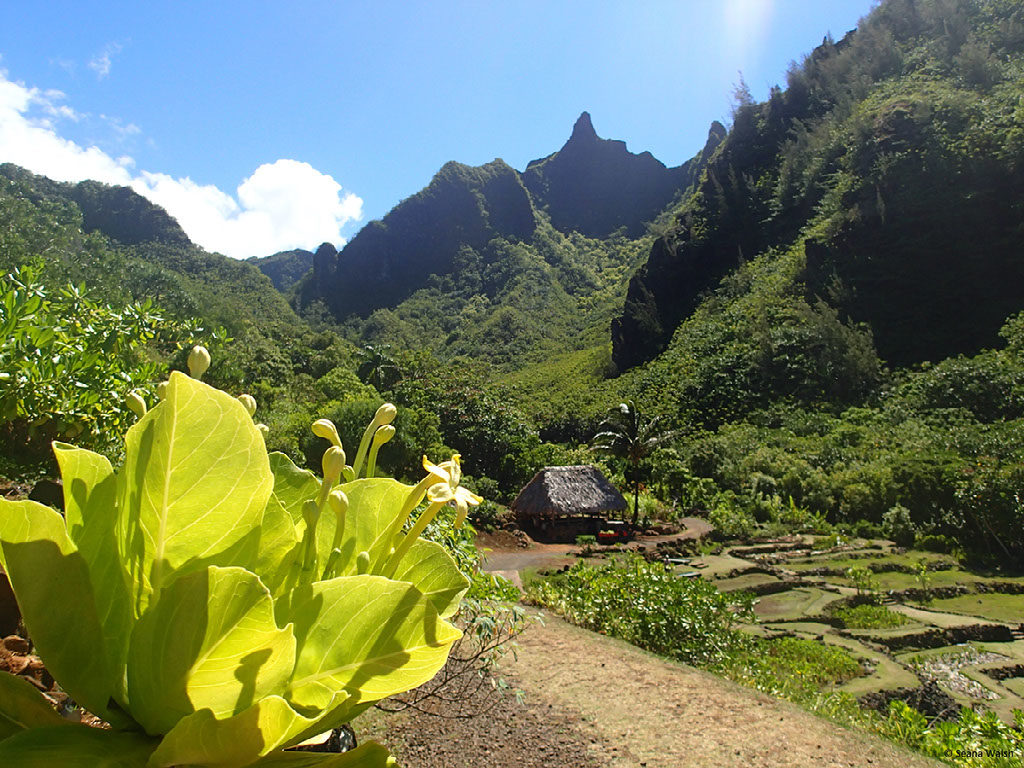
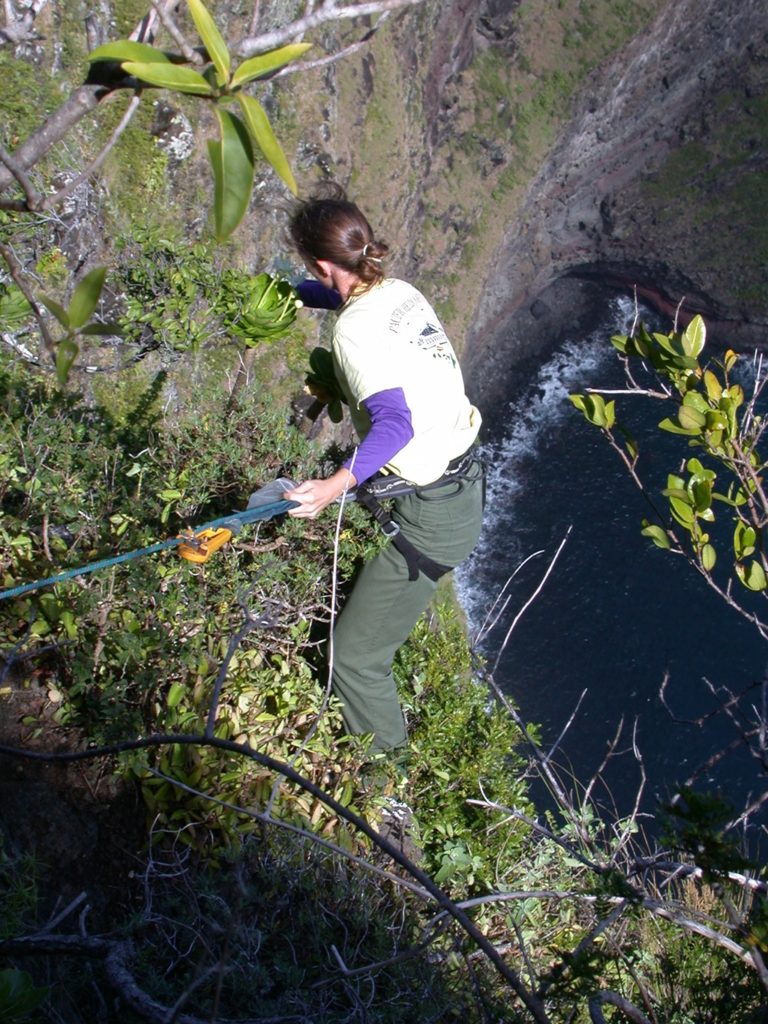
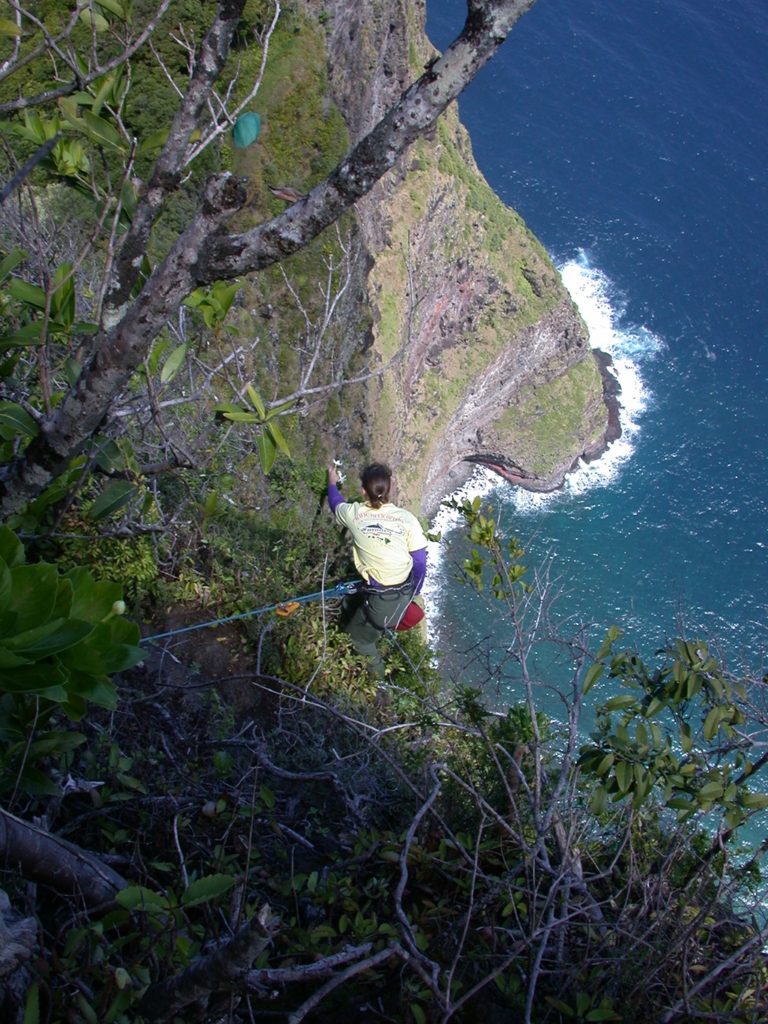
Student rappelling down cliffs to reach plants. Images provided by Ken Wood at the National Tropical Botanical Garden.

